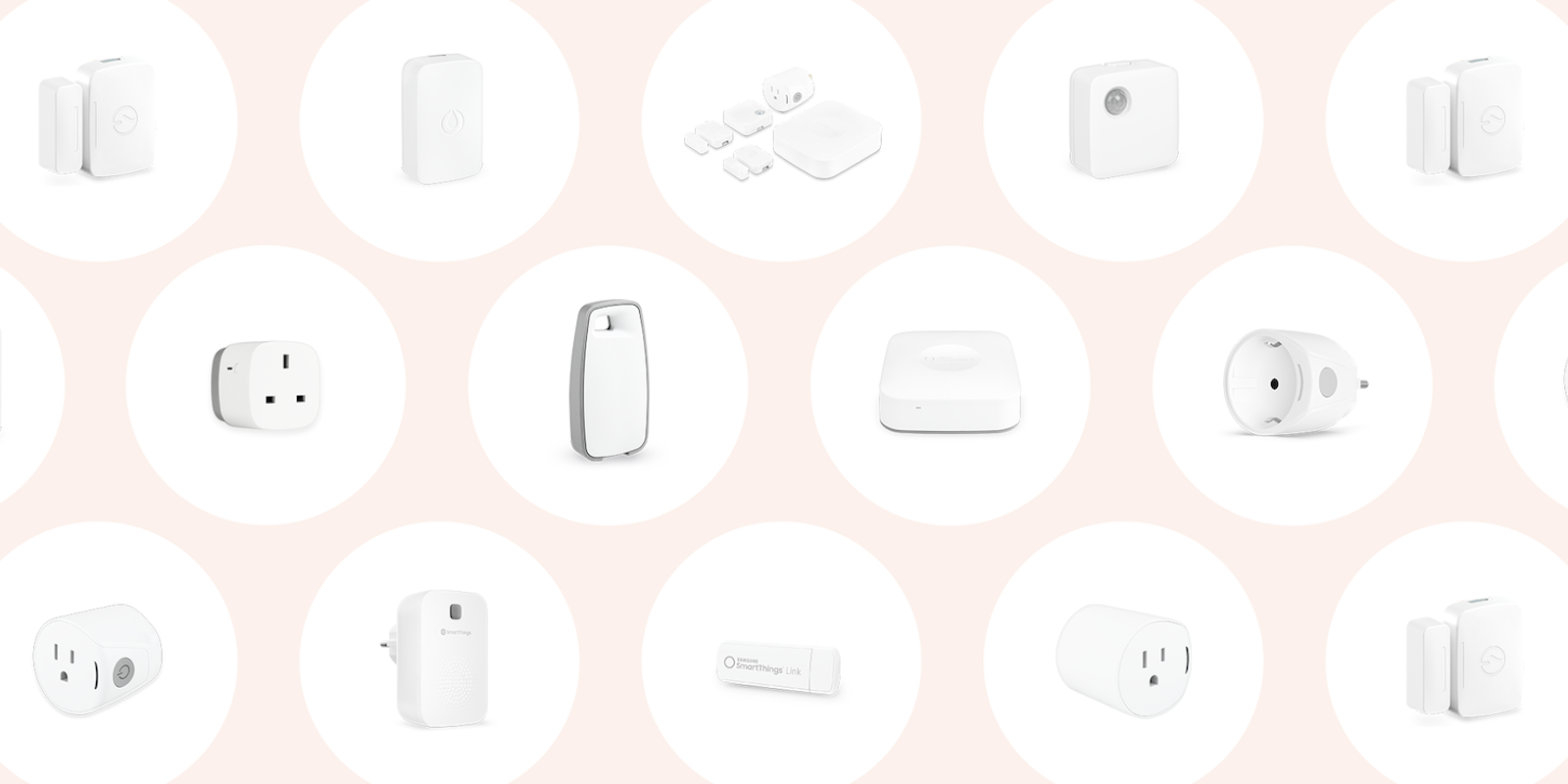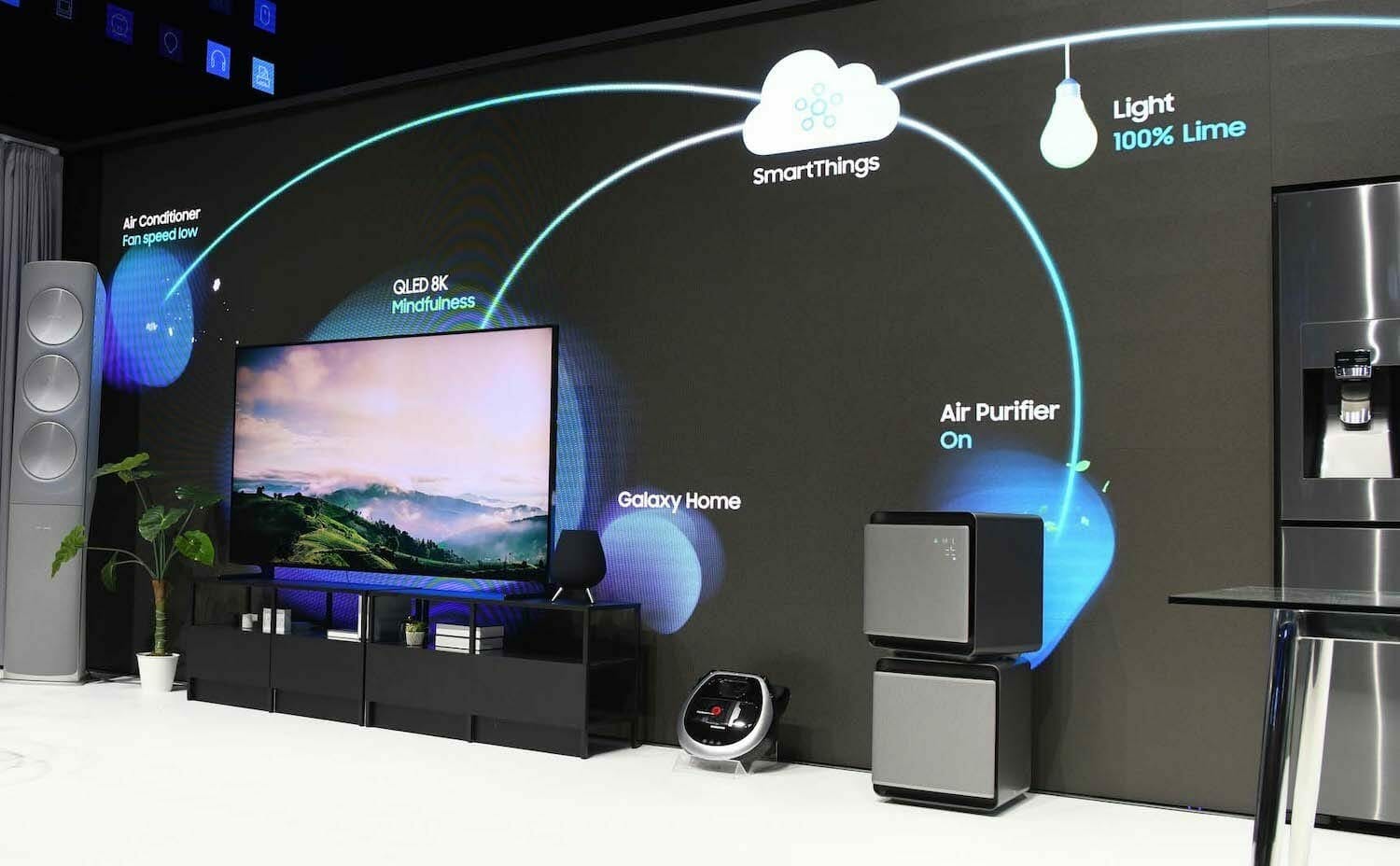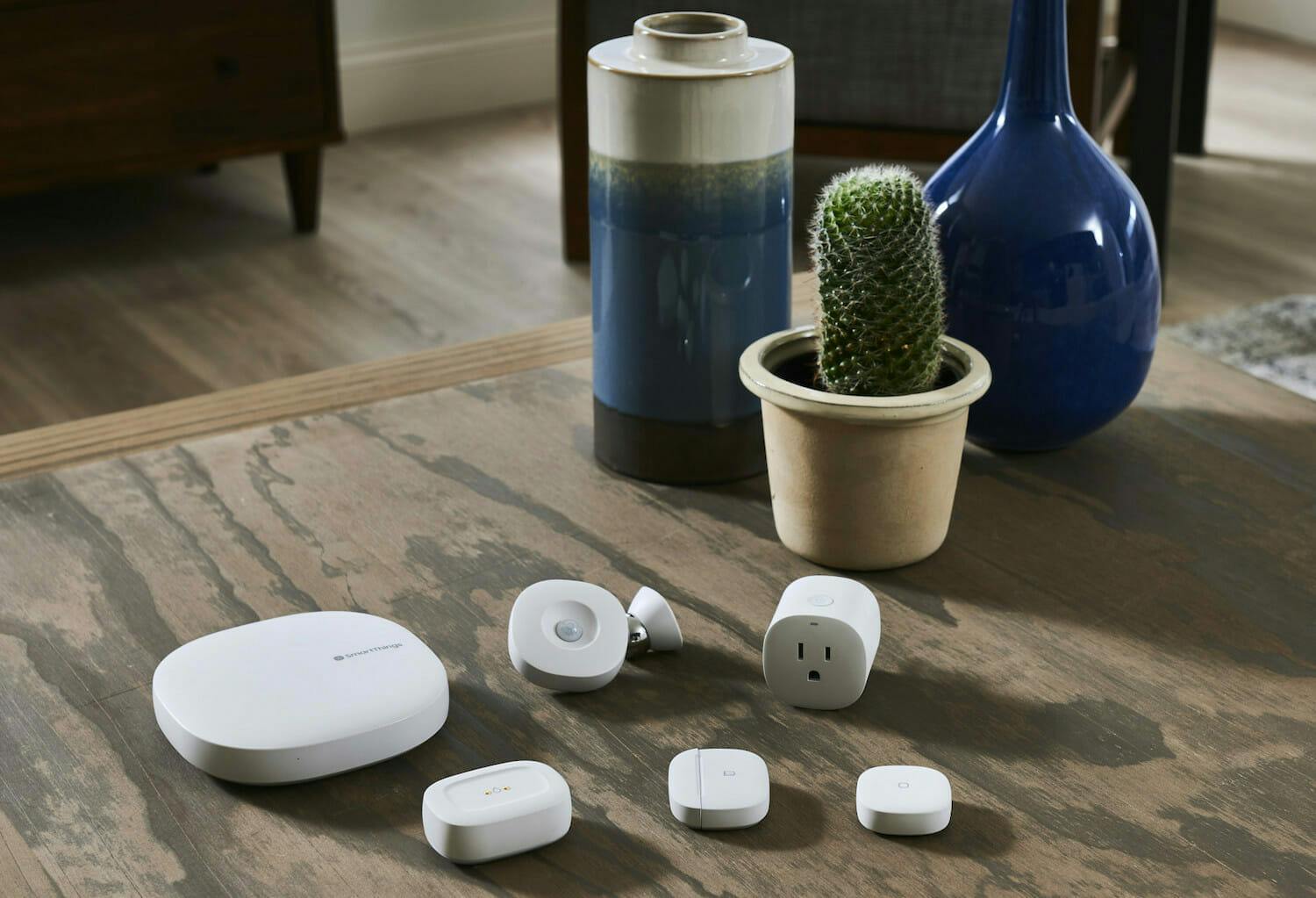Do you want a smart home that’s centrally controlled through one app, but don’t necessarily want a smart speaker? No problem! What you need is a smart home hub, and the SmartThings Hub is one of the most popular and well-connected devices on the market. But what is SmartThings, and how does it work? This guide will answer that, plus what you can do with SmartThings, what devices it connects to, and whether it’s ultimately right for you.
What is SmartThings?
SmartThings is a brand owned by Samsung. SmartThings isn’t a device but rather a name that Samsung tacks onto other products or uses to indicate it works within the setup. It’s also the name of the app you use to control all the smart devices and products in your home.
In addition to being a brand name, “SmartThings” refers to the cloud-based intelligence that makes your smart home work, as well as the companion app you use to control it all. It’s similar to how “Alexa” refers to both the intelligence that powers an Amazon Echo device and the app you use to set it up, customize your settings, and control your devices.
Samsung has announced that it’s coming out soon with its own smart speaker and assistant, called Galaxy Home and Bixby.
How does SmartThings work?
To use SmartThings, you need a hub. Currently, there are a few hubs and kits for SmartThings to choose from.
The most basic is the SmartThings Hub ($69.99). It’s a physical device that looks a little like a router. You connect all your compatible smart home devices to it and control them via the SmartThings app on either Android or iOS. You can also buy a SmartThings Wi-Fi ($119.99), which is a Wi-Fi router and the hub bundled together.
READ MORE:
- Amazon Alexa is the home assistant you never knew you needed
- Google Home vs. Google Home Mini: Which is better?
- Apple Homepod vs Google Home vs Amazon Echo
- What is Apple TV and is it worth it?
Samsung also sells the hub part of the technology bundled into other products. For example, the SmartThings ADT Security Kit ($199.99) is a small starter kit for home security that puts the hub functionality into a wall-mounted touch screen panel. You can add a subscription to ADT Security if you want a dedicated security service for responding to triggered alarms, but you don’t have to. The kit and hub work with or without it.
What can you do with SmartThings?
Once you have a hub, you set it up using the mobile app. You connect your hub to other compatible devices, such as light bulbs, plugs, thermostats, and door locks.
Then, you can use the app to remotely program your devices. For example, you can create rules such as “when the door has been shut for 60 seconds, automatically lock it,” or “if the front door opens, automatically turn on the lights.”
You can also create routines, or strings of multiple actions that trigger at set times of the day. In the morning, you could have your coffeemaker start brewing at 7am, just as a news podcast plays on your smart speaker, and your security alarm automatically disables itself.
What is the SmartThings app?
The SmartThings app helps you control the various smart devices you have though out your home. A new app was released recently and the classic SmartThings app was discontinued in October of last year.
The new app promises that you’ll be able group devices together and control them simultaneously, configure specific device settings like time and operating conditions, and get status notifications about devices.
If you have a ton of different smart devices in your home, the app makes it pretty easy to keep track of and use them. The app allows you to scroll through a list of all the connected devices and easily change different settings.
Which devices work with SmartThings?
SmartThings supports a long list of devices, ranging from smart speakers to doorbells. I’ll list a bunch of them in a moment.
The connectivity with smart speakers can seem a bit confusing. If you already have a Google Home or Amazon Echo, why would you need SmartThings at all? Perhaps because Samsung has a long history of making hardware, and many of those devices are now compatible with SmartThings, such as refrigerators, television sets, and clothes dryers. The Amazon Alexa ecosystem is by no means small, but Samsung still has a leg up with certain types of devices.
SmartThings also got on board early with sensors, so it supports hundreds of them: water sensors, door sensors, motion sensors, smoke and fire sensors. Depending on which ones you have or want to install, SmartThings may support more of them than your smart speaker does.
Here’s a sampling of some of the best gadgets you can connect to SmartThings:
- Light bulbs and lamps by Philips Hue, Sengled, LiFi, Sylvania, and IKEA
- Wall switches and dimmers by ecobee, Ecolink, Belkin, Lutron, Leviton, Zooz, GE, and Enerwave
- Outlets and smart plugs by Sylvania, Sengled, Honeywell, and Eaton
- Iris Smart Water Sensor
- First Alert Smoke Detector
- SmartThings Water Leak Sensor
- BeSense Z-Wave Plus Wall PIR Motion Detector
- Ecolink ZigBee Flood Sensor
- Arlo cameras
- Ring video doorbells and cameras
- August Smart Lock Pro
- Yale Touchscreen locks
- Kwikset locks
- Schlage locks
- Thermostats by ecobee, Honeywell, Stelpro, American Standard, and Iris
- Speakers and sound systems by Bose and Sonos
- FortrezZ Water Valve
- Aeotec Home Energy Meter
- SmartThings Siren
- Samsung clothes dryers
- Select Samsung television sets
- OSO Technologies PlantLink Soil Moisture Sensor
- Rachio Smart Wi-Fi Sprinkler Controller
- Apple Watch
- Garmin watches
- Tesla cars via EVEConnect
- CoopBoss backyard chicken coops accouterments, such as an automatic coop door opener.
Is SmartThings right for you?
One reason to use SmartThings as your home hub rather than a smart speaker is that you don’t have to have a device listening in your home 24/7. That’s a compelling reason for anyone who’s privacy-minded.
It’s also a great choice for people who need a DIY solution. If you don’t have a ton of money to blow, or you rent your home and can’t install more permanent smart home fixtures (like the fanciest kinds you get from a custom smart home), then SmartThings is definitely an option to consider.




